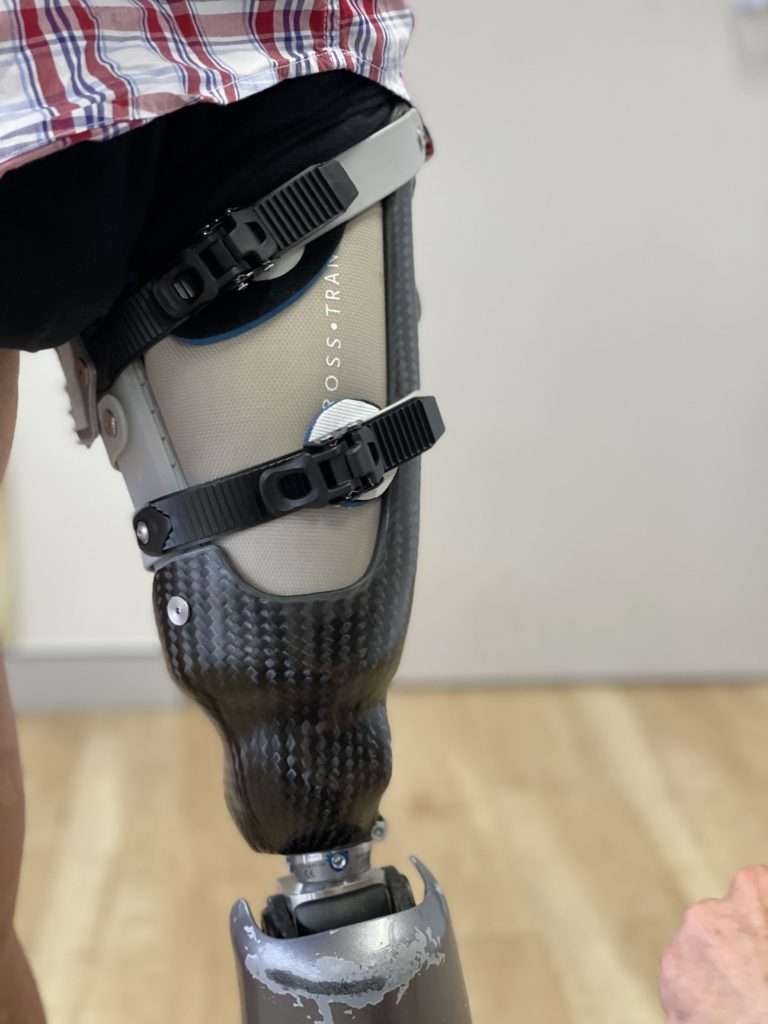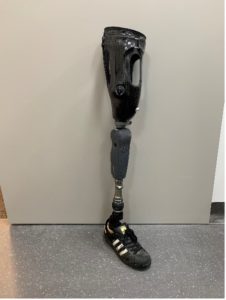Prosthetic Foot & Ankle The human foot-ankle is a very complex functional unit. It provides…
Prosthetic knees have had some impressive technological enhancements in previous decades and continue to do so. These improvements have helped enhance the functionality and safety of prosthetic knees. Most notably in these improvements is Microprocessor controlled knees (MPK’s). Other mechanical knees use the integration of hydraulic and pneumatic features which allows the knee units to adapt better to real-life situations and environmental changes which is imperative when walking on slopes, stairs, and uneven ground etc.

The primary difference between prosthetic knees is whether they are single or multi-axial, which means they have a single hinge point or at multiple hinge points. Single Axis is the most common prosthetic knee joint. The majority of microprocessor knees as single axis. Multi axial knees (polycentric knees) can shorten the prosthesis when in swing, reducing the risk of tripping and falling. Polycentric knee units can meet the needs of various users from low to high activity. These are also a good option for people with long residual limbs, so the prosthetic knee does not stick our further than the sound side in sitting.
Some of our designs such as our recreational limb was put together for a client that has dreams about hitting the slopes and waves with their prosthesis.
Prosthetic knees use a variety of strategies to control the way the knee behaves. Pneumatic knees use air to adapt their function such as when walking at different walking speeds. Hydraulic knees use fluid to adapt their function. Other varieties can utilise a combination of springs, friction and/or locks to control the function of the knee in a more basic way.
Not all knees use microprocessors and sensors to vary their function. These rely solely on alignment and the user to ensure the knee works correctly at different stages of walking.

MPK’s use a computer and input from various sensors to continually change and optimise the knee function. These technological inclusions allow the knee to better adapt to real-life situations and environmental changes, allowing improved safety and function. Additionally, MPK’s have intuitive functions for going up and own stairs and ramps. MPKs can be programmed to specific activities such as cycling and running. Microprocessor knees can be heavier than mechanical knees and require charging.
MPK’s are a great prosthetic knee for the appropriate person but are not appropriate for all users. Your prosthetist will work closely with you to find the most appropriate prosthetic knee based on your level of amputation, functional capabilities, goals, and activities that you enjoy.
Along with the enhancements with prosthetic knees, there is now a variety of socket design styles, suspension methods, prosthetic feet.
Sign up to our newsletter to keep in the loop with the latest news from APC Prosthetics
